John Arnold: Dearest Mam... I’ll visit your grave for your 100th birthday
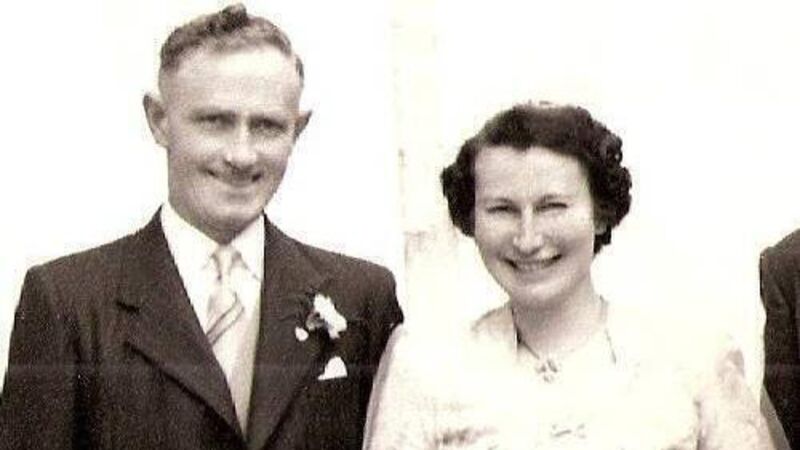
John Arnold's mother, Mary Arnold, née Twomey, with her husband Dan Arnold on their wedding day.
From the day she married my father in 1952 until we got married in 1981, Mam lived in this house so her memory and spirit are all around us.
My grandfather, John Twomey, had four sisters; Mary and Johannah died as children, Nora qualified as a nurse, worked in London and died during the Spanish Flu epidemic. Elizabeth, or Auntie Lizzie as she was called, died in 1957 - the year I was born.
As the only son, it was probably expected that John Twomey would follow in his father and grandfather’s footsteps and become the farmer of the ancestral acres at Kilcor, Castlelyons. People that knew him spoke of his brilliant mind, common sense, and intelligence.
His father died whilst felling a tree in 1921, and by then my grandfather had set out on a different path in life. He got a position with the newly set up Free State Department of Agriculture.
Initially, he worked on the Cow Testing (milk recording) Scheme. Later then, he got promotion and became a Senior Livestock Inspector in the province of Leinster.
I don’t know if my grandfather John Twomey ever used the words ‘besotted’ or ‘infatuated’, but it seems that’s exactly how he felt one autumn day in the early 1920s.
The Leahy family of Killamurren, Bartlemy, and Abbeylands, Castlelyons had a threshing ‘set’ out on hire to farmers in the area. They were short of help one day and asked my grandfather to give them a hand. He agreed - it proved to be a fateful occasion.
She was Nora McCarthy, my Granny Twomey. They married in Leamlara Church and had the ‘reception’ in Ballinaskeha.
The young couple settled down in Kilcor and, on Friday, May 15, 1925, their first child, a baby daughter, was born. Next day she was taken to Castlelyons Church to be baptised as Mary Twomey. Her grandfather, Dan McCarthy, and aunt, Lizzie Twomey, ‘stood’ for her.
My grandparents had five more children - Jeremiah, Dan, Bridget (Bridie), Sean and Nora. My uncles Dan and Sean and aunt Nora are thankfully with us still, all now in their nineties.
Mam was the first of the family to go to school in the nearby Britway NS. In the 1930s, the Government organised a unique project across the country. The Schools Project saw teachers put questions, ‘prompts’, and general enquiries in the copy books of young pupils. The children then went home to their parents, grandparents, neighbours, and friends and asked questions on the various ‘topics’.
The results are amazing and a collection of thousands of pages now exist containing brilliant information. When the ‘survey’ was done in Britway in 1935, Mam was just ten years of age.
In total, 42 pages of material were recorded in Britway and the name ‘Mary Twomey, Kilcor’ is on many.
Mr Sheehan, the teacher, gave a plethora of subjects to his young ‘collectors’ - from Townland Names, Famine Times, Hidden Treasure, and the Care of Farm Animals, to The Potato Crop and Field Names.
In 1935, there were 50 pupils in Britway NS; 37 with blue eyes and 13 with brown, and hair colour was; very dark, 6, dark, 13, fair, 25, and red, 6.
Mam always had beautiful handwriting and even as a ten-year old her script is beautiful. Her contribution on ‘The famine times’ was as follows.
“
As I said, my grandfather was working with the Department of Agriculture overseeing the Cow Testing Scheme, the forerunner of milk recording - with a view to improving dairy cow breeding and milk production. West and Mid Cork were some of the areas he was in charge of.
In the 1930s, Drishane Castle and estate near Millstreet was owned by the Sisters of The Infant Jesus. The nuns had opened a convent school here in 1909 which flourished until 1992. A dairy herd was kept on the farm attached to the Convent School.
We surmise that on one of his official Department visits to Drishane, John Twomey may have discussed the further education of his three daughters with the nuns. So it came to pass that Mam, Auntie Bridie and Auntie Nora were educated in Millstreet.
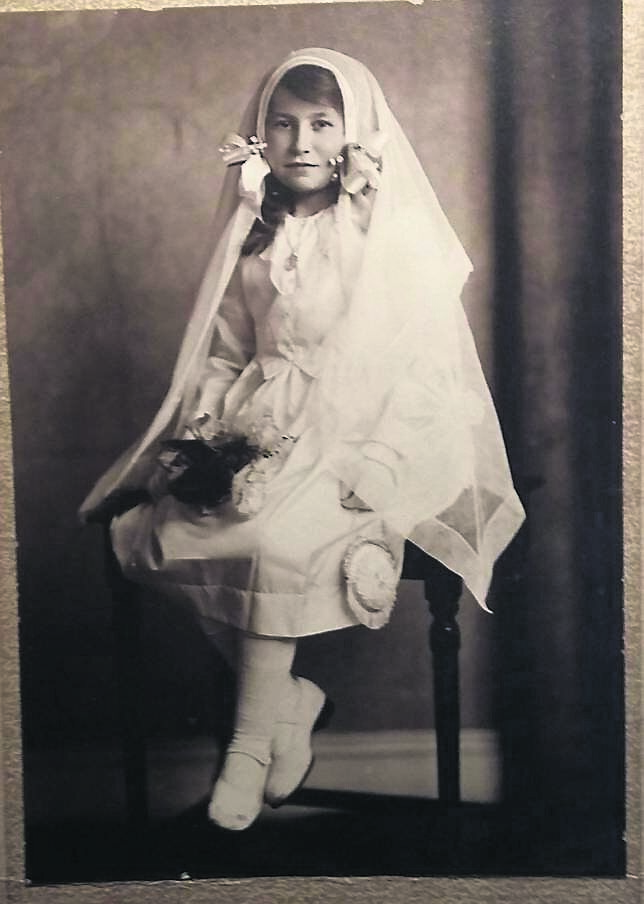
In 1941, my grandfather was diagnosed with a terminal blood disorder- a condition easily remedied today but not over 80 years ago. He kept working until the spring of 1943 but died in July of that year, aged just 54.
Mam was just 18 and often recalled her father’s last illness – he died at home in Kilcor.
In 1952, Mam married Dan Arnold here in Garryantaggart. The newly-weds shared their home with Dada’s mother and his sister, Auntie Jo, and Paddy Geary who worked for three generations of the Arnolds. It was a mixed farm but my father was more than a farmer – an inventor, mechanic, electrician , breeder and exporter of greyhounds, beekeeper and, by all accounts, a great neighbour.
Mam and Dada were only married a short few years when he developed the scourge of TB. It was the era of Noel Browne as Health Minister when sanatoria were being built all over the country and hopes were high that Dada would make a full recovery.
With five children born in eight years, it was a busy and happy home, despite the recurring bouts of illness.
Granny Arnold died in 1959 at the age of 83. Less than two years later, in September, 1961, my father died, aged just 48.
It must have been an unbearable burden for Mam to bear - with a farm to run and five children under ten to bring up. Like her mother before her, she just got on with it.
Her Twomey brothers were a great back to her, and Auntie Jo, Granny Twomey and Paddy all helped to keep the show on the road.
We still had a mixed farm then, like so many, with cows, sheep, and pigs, and Mam even kept a few greyhounds up until the early 1970s.
She grew a few acres of potatoes, sugar beet and malting barley as well as oats and feeding barley. She always said the spuds paid for our education.
Herself and Dada had been planning to go to Lourdes in 1962, but death decreed he never got there. She took each of the five of us, one by one, when we were 10 or 11.
That started her life-long love of Lourdes – when she died suddenly in 1996 she was only back a few days from Lourdes. She had a great fondness and devotion also to Padre Pio.
She was only 71 when she died, but in fairness, she packed a lot into those seven decades.
She would have been 100 today so we’ll visit Kilcor and Britway and the old cemetery in Rathcormac.
Gone but not forgotten, and I think her legacy lives on and will do so in the years to come.
God bless you, Mam.
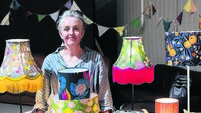

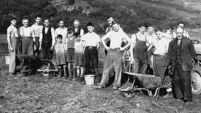
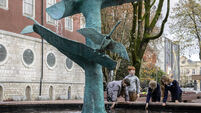



 App?
App?







